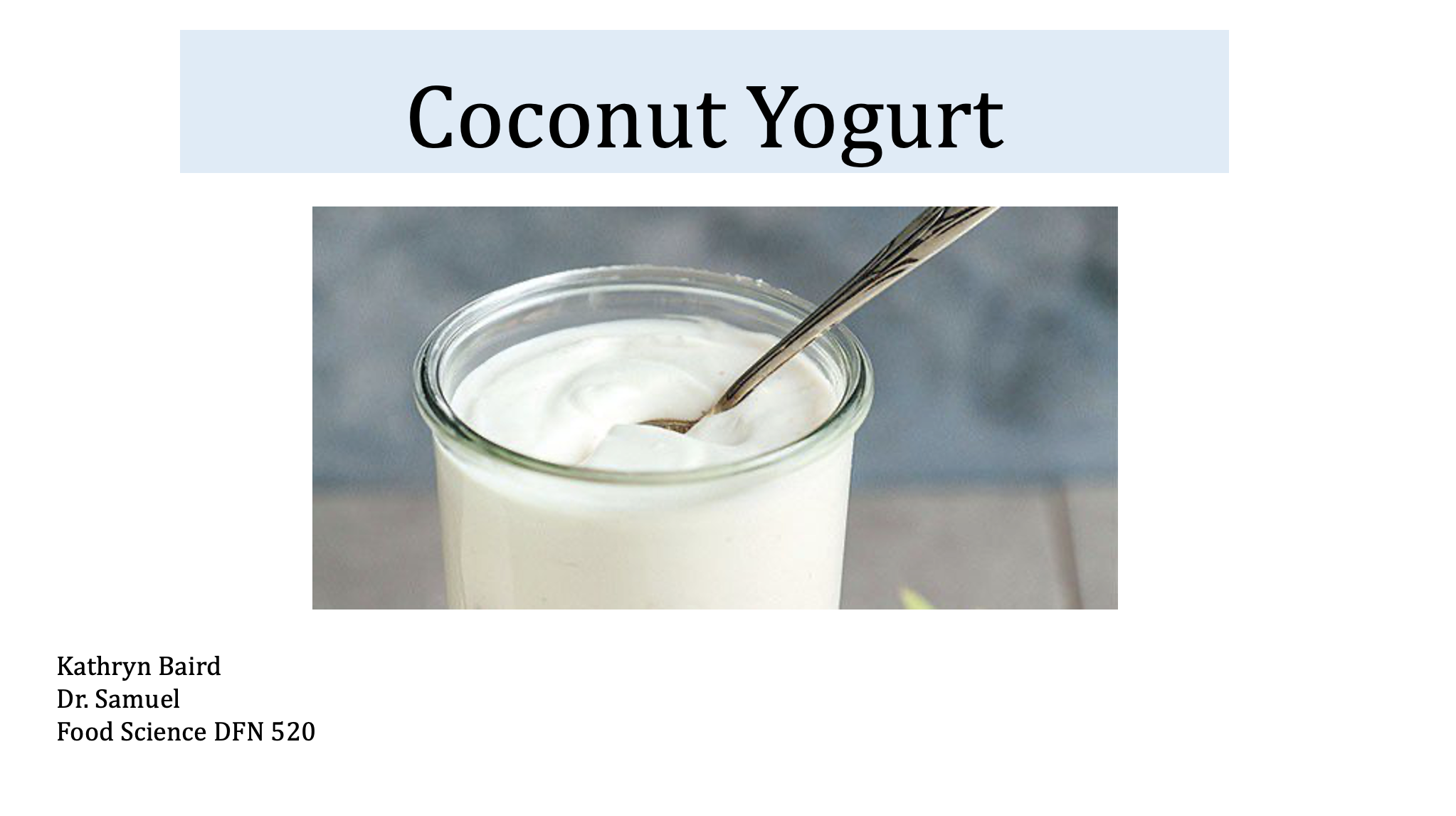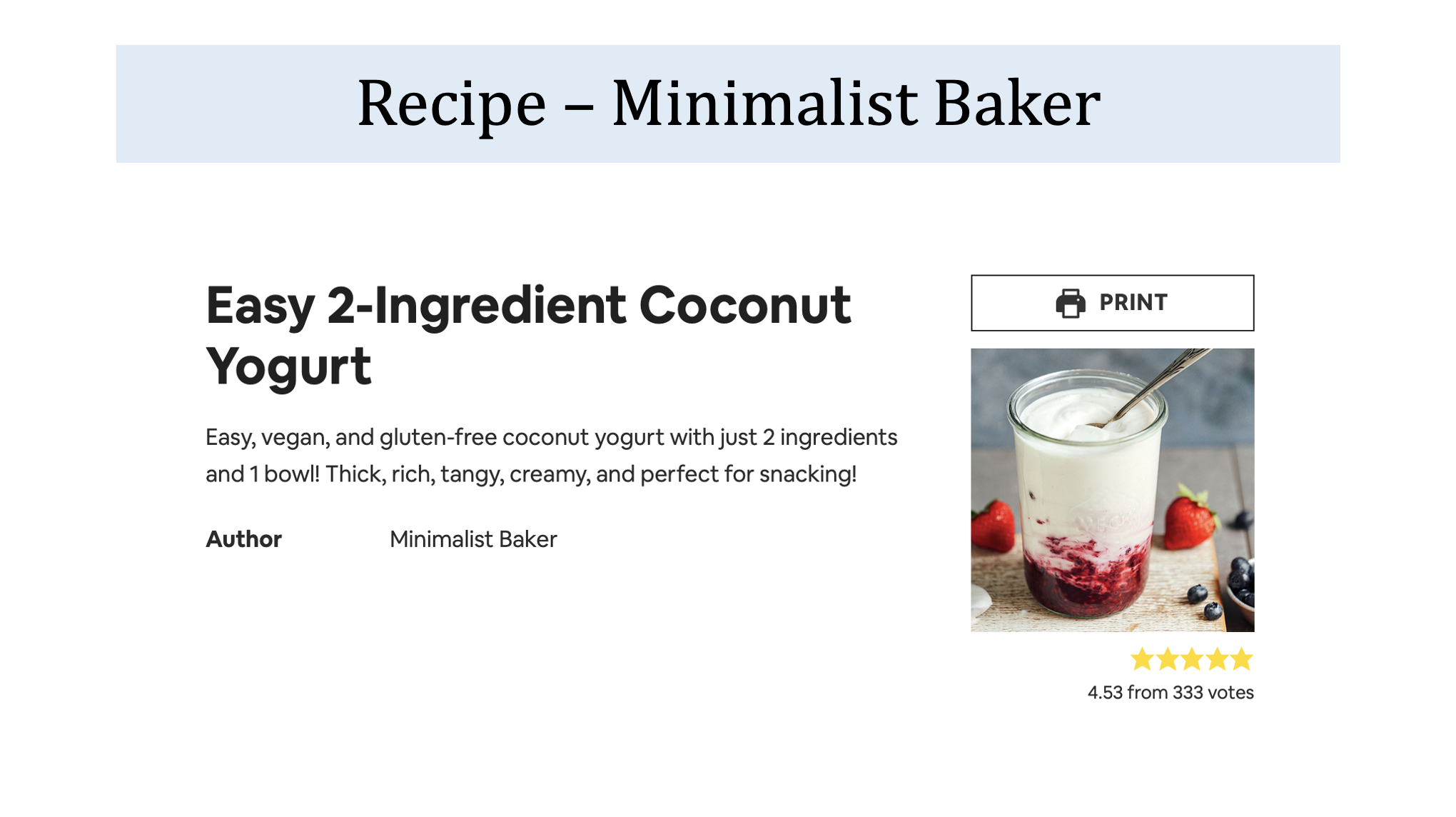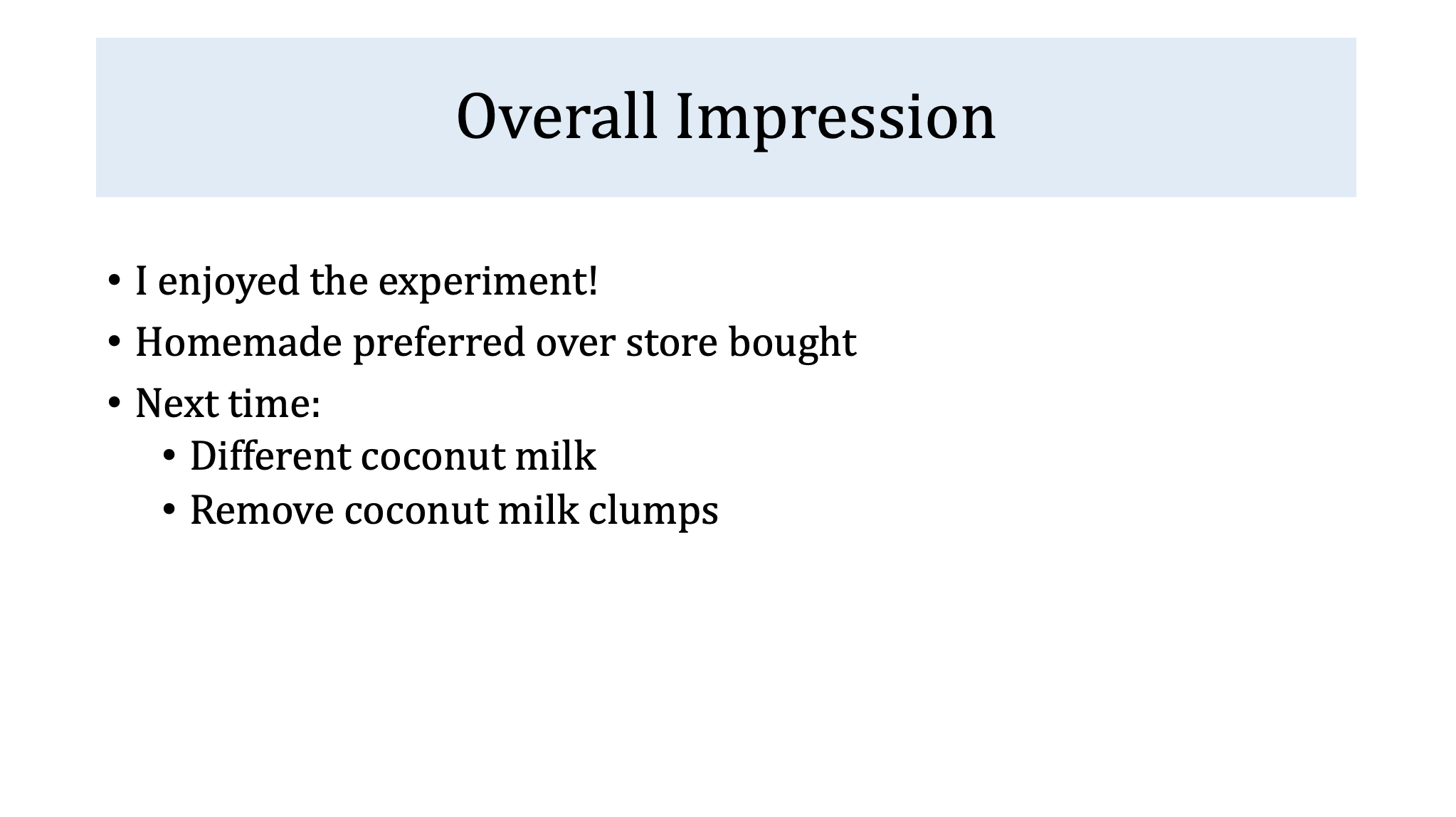Make Your Own - Coconut Yogurt
For my dairy lab for my Food Science class, I chose to make the plant-based coconut yogurt and compared this to a store bought coconut yogurt, using a recipe from minimalist baker.
Plant-based yogurts represent an important segment among the dairy-free alternatives, meeting the needs of many consumers, such as those with dairy allergies and ethical concerns. Non-dairy yogurts are generally made by fermenting aqueous extracts obtained from different raw materials (e.g., legumes, seeds, and in this case coconut). These extracts have an appearance and consistency similar to cow’s milk.
It was shown in a study by Grasso et. al that upon comparing six commercial plant-based yogurts to a dairy yogurt, the plant-based yogurts had similar texture (such as firmness, consistency, cohesiveness, and index of viscosity) and sensory properties to the dairy-based product – this included soy, coconut and cashew yogurt products
Ingredients and materials:
Only two ingredients were required for this recipe: 1 14-ounce can of full fat coconut milk and 2 probiotic capsules. I used the recommended brands for both of these items. For the coconut milk I used the 365 Whole Foods brand. It is important to use a coconut milk that will produce the desired flavor and creamy, smooth consistency. For my probiotic, I used the Renew life brand. Listed below are the specific bacteria cultures included in this product, all within the genuses of Bifidobacterium and Lactobacillus.
For this experiment, a few other materials were needed such as a glass jar, cheesecloth, whisk, wooden spoon, and rubber band.
Procedure:
1. First I shook the coconut milk well in the can before opening. Then I opened and poured the coconut milk into a clean, sterilized glass jar. I sterilized the jar by rinsing it thoroughly with hot soapy, boiling water in order to to make sure there was no other bacteria present that could interact with the probiotic cultures or coconut milk.
2. I mixed the coconut milk briefly with a whisk to get a homogenous mixture.
3. I then emptied my probiotic capsules into the coconut milk and used the wooden spoon to stir the probiotic around the coconut milk to get them nicely integrated.
4. Next, I covered, the glass jar with a cheesecloth and secured it tightly with a rubber band and set it in a warm place for 40 hours at a temperature 75 degrees or above. The warm environment encourages the culturing process
5. Once the yogurt was at the desired tanginess, I placed it in the refrigerator to thicken up for 4 hours.
Comparison to Store Bought Yogurt:
I compared my coconut milk yogurt to the So delicious coconut milk yogurt. When comparing the two yogurts based on ingredients, first the So delicious yogurt contains additional gelling and stabilizing agents. Second, the culture profile slightly varies between the two.
The sensory qualities of the two yogurts were very different.
Appearance, the So delicious yogurt was shiny, translucent, whereas the home-made yogurt was more opaque. The store-bought yogurt was also more homeogenous in terms of its uniformity, whereas for the homemade yogurt, there were some clumps.
Odor: It was very hard to detect for the store-bought yogurt, there was a faint coconut smell if anything. The homemade yogurt on the other hand had a much more prominent coconut and sweet aroma, which was very pleasant.
Taste: The store-bought yogurt tasted pretty bland, with a hint of coconut. In contrast, for the homemade yogurt, I could strongly taste the coconut and tanginess as well from the acidity produced from the bacterial cultures.
Texture: The texture of the store-bought yogurt was way more watery, slippery, and runny than the homemade yogurt which was a lot thicker, firmer, and more viscous.
I really enjoyed this experiment! I have always wanted to make my own yogurt, especially one that was plant based. I thought the sensory qualities of the homemade yogurt far outweighed those of the store-bought yogurt, and I am now considering making my own yogurt for now on.
Sources:
Brown, Amy C. Understanding Food: Principles and Preparation. , 2019. Print.
Grasso N, Alonso-Miravalles L, O'Mahony JA. Composition, Physicochemical and Sensorial Properties of Commercial Plant-Based Yogurts. Foods. 2020 Feb 26;9(3):252. doi: 10.3390/foods9030252. PMID: 32110978; PMCID: PMC7142433.








